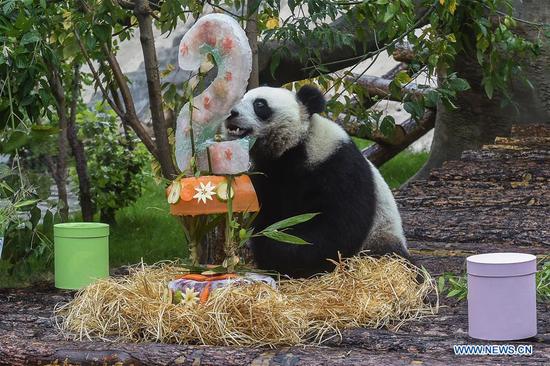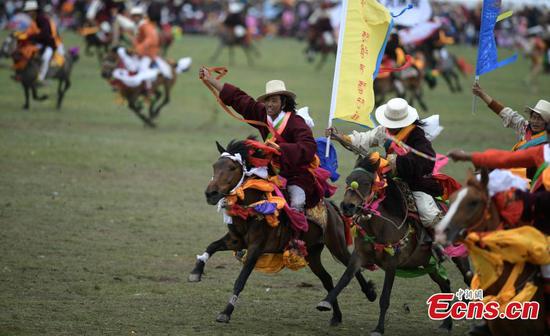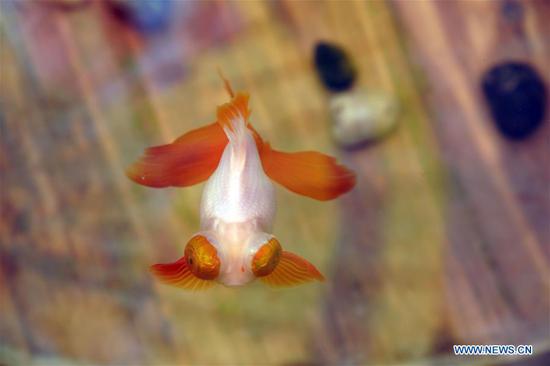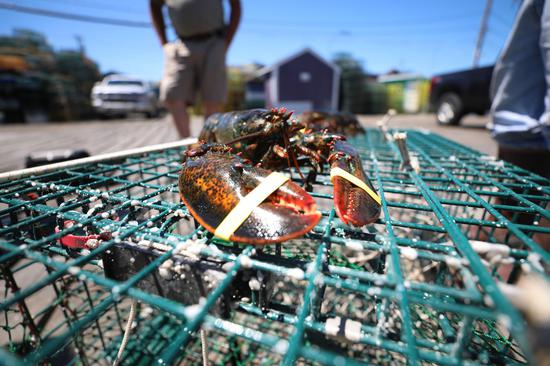
Photo taken on July 25, 2019 shows giant pandas at the "Giant Panda Kindergarten" in the Shenshuping base of China Conservation and Research Center for Giant Pandas in Wolong, Southwest China's Sichuan province. Eighteen giant panda cubs born in 2018 had a birthday party Thursday in Shenshuping base. All of the 18 cubs are to turn one year old between June to September. (Photo/Xinhua)
This summer, the world-famous Chengdu Research Base of Giant Panda Breeding in Sichuan province has been flooded with visitors, many of them school children on holidays accompanied by their parents.
The tranquil forest bases of the China Conservation and Research Center for the Giant Panda located across Wenchuan county, Dujiangyan and Ya'an cities, Sichuan, have also witnessed a sharp rise in the number of tourists this year.
Last year, there were 548 pandas in captivity worldwide. A total of 285 were in the bases of the conservation and research center, the largest facility of its type in the world, and 184 at the Chengdu panda base.
The successful programs are the result of more than three decades of hard work and research in Sichuan.
In the early 1980s, tourists had to visit the Chengdu Zoo if they wanted a glimpse of a panda.
The Chengdu panda base was not set up until 1987, while the conservation and research center had only one base located in inaccessible mountain terrain in Wenchuan county. In 1987, the Chengdu panda base had only six pandas, all rescued from the wild, while the conservation and research center had 10.
The sharp increase in the number of pandas in Sichuan has been largely due to researchers' painstaking efforts to solve panda breeding problems.
Zhang Hemin, executive chief of the conservation and research center, said "it used to be difficult for captive pandas to become ruttish and mate and for their cubs to survive".
Researchers did not understand the pandas' habits. Thinking they preferred a solitary life, they kept each panda isolated in a tiny den. As a result, the pandas became depressed and had difficulty becoming sexually excited.
Researchers provided captive pandas with more opportunities to interact. Pandas were placed in dens with members of the opposite sex so they would become familiar with each other's smell, in an attempt to encourage mating.
Wild pandas are active for many hours each day.
To encourage them to move around in captivity, the researchers placed biscuits in their dens in hard-to-get-to locations. They also gave the pandas frozen fruit which they had to handle in order for it to thaw, Zhang said.
Many newborn panda cubs also died because of abandonment. Fifty percent of all newborns are twins, but the mother usually only cares for one. Researchers would take a deserted baby and feed it milk. The researchers would then from time to time switch it with the favored cub so the mother unwittingly supported both.
Researchers also emulated the mother's behavior in other ways, including cleaning and grooming the cub, Zhang said.
"With the three primary obstacles hindering the breeding of captive pandas now overcome, a selfsustaining and growing panda population has been ensured," he said.


















































